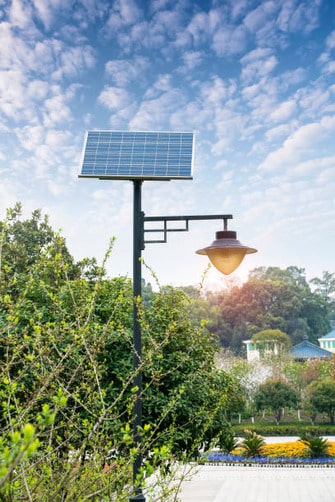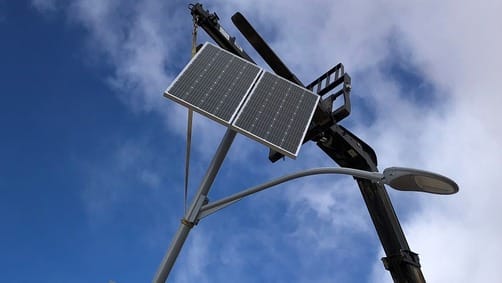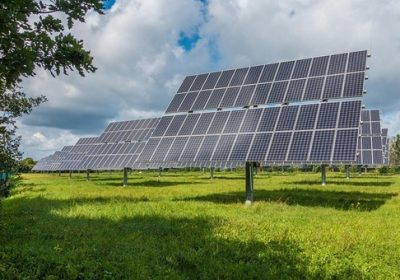Lighting the Way: A Guide to the Design and Installation of Commercial Solar Street Lights in Australia
Have you ever wondered how the glowing trails of solar street lights along Australia’s highways and byways are designed and installed to achieve their best performance? The design and installation of commercial solar street lights are pivotal to their effectiveness and efficiency. In this guide, we’ll walk through the essential steps and considerations involved in this process, ensuring that each light installed contributes positively to the illuminated landscape.
Design Considerations Of Solar Street Lights
Assessing Lighting Requirements
What are the specific needs of the area being lit? The first step involves a detailed assessment of lighting requirements, which vary based on location and intended use, whether it’s enhancing the safety of darkened city alleys or illuminating remote outback roads.

Local Weather, Shading, and Terrain
How does the local environment influence solar lighting solutions? Factors such as local weather conditions, potential shading from nearby structures or natural features, and the terrain must be considered to optimize the solar energy received and utilized.
Choosing the Right Components
What size solar panel and battery are needed? The selection of solar panel capacity, battery size, and LED light output is crucial. This choice depends on the expected energy needs and the amount of sunlight available, ensuring the system is neither underpowered nor wastefully oversized.
Solar Street Light Components
Understanding the Components
What makes up a solar street light? A typical system includes solar panels, batteries, LED lights, controllers, and poles. Each component must be selected for its quality and ability to meet the specific demands of its environment.
Importance of Quality
Why prioritize high-quality components? The longevity and performance of solar street lights heavily depend on the quality of the components used. High-quality materials can withstand the harsh Australian climate and require less maintenance over time.
Site Preparation for Solar Street Lights
Site Suitability and Sunlight Exposure
Is the site suitable for solar installations? Assessing the installation site for optimal sunlight exposure and suitability includes clearing vegetation that might shade the panels and leveling the ground to ensure stable installations.
Preparing the Site
What site preparations are needed? Besides environmental assessment, preparing the site might also involve addressing any local issues such as drainage or securing necessary permissions from local authorities.
Installation Process Of Solar Street Lights
Step-by-Step Installation
How are solar street lights installed? The installation process involves several key steps: mounting the solar panel, installing the battery, and connecting the LED light. Each step must be handled with care to ensure stability and operational efficiency.
Positioning for Optimal Performance

Where should each component be placed? Proper positioning of the solar panel to capture maximum sunlight, strategic placement of the light pole for optimal illumination, and secure installation of the battery for easy maintenance are crucial.
Wiring and Connection for Solar Street Lights
Secure and Efficient Wiring
How should the components be wired? Proper wiring is essential for the efficiency and safety of solar street lights. This includes ensuring all connections are secure and using waterproof conduits where necessary.
Importance of Waterproofing
Why is waterproofing important? Proper connections and waterproofing are crucial to prevent damage from environmental exposure, particularly in the variable Australian weather which can range from scorching heat to torrential rains.
Testing and Commissioning Of Solar Street Lights
System Testing
How do you test a solar street light system? Before full-scale operation, it is essential to test all components to ensure they function correctly together. This testing can help identify any issues that might have been overlooked during installation.
Commissioning the System
What does commissioning involve? Commissioning the system includes final adjustments to the installation and setting up any additional features such as motion sensors or remote monitoring systems.
Maintenance and Troubleshooting Of Solar Street Lights
Routine Maintenance
What maintenance is needed? Routine maintenance tasks include cleaning the solar panels, checking connections, and ensuring the battery is functioning properly to extend the life of the street lights.
Troubleshooting Common Issues
What are the common troubleshooting issues? Understanding common installation issues and how to troubleshoot them is vital for maintaining long-term performance.
Compliance and Regulations Of Solar Street Lights
Adhering to Local Standards
What regulations must be considered? Compliance with local regulations and standards is crucial. This section will cover the importance of understanding and adhering to these rules, including obtaining the necessary permits and approvals for installation.
Designing and installing commercial solar street lights involves careful planning and adherence to best practices. The long-term success of these installations hinges on the quality of both the design and installation processes. By considering the factors outlined in this guide, businesses and municipalities can significantly enhance the effectiveness and efficiency of their solar lighting solutions.
FAQs:
- How long does it take to install a commercial solar street light?
- Installation time can vary, but typically it takes about 2-3 hours per light, depending on site conditions and preparation.
- What are the typical costs associated with installing commercial solar street lights?
- Costs can range from AUD 2,000 to AUD 5,000 per unit, including components and labor.
- How often should solar street lights be maintained?
- Routine maintenance, such as cleaning and inspection, should be conducted at least twice a year.
- Can solar street lights operate during prolonged rainy or cloudy weather?
- Yes, with properly sized battery storage, solar street lights can operate for several days without sunlight.
- Are there specific brands or types of solar panels and batteries recommended for street lighting?
- The choice of solar panels and batteries depends on specific project requirements, but always choose high-efficiency and durable brands known for outdoor applications.
Read more about commercial solar street lights
Enlightened Choices: Exploring the Benefits of Commercial Solar Street Lights in Australia
Shedding Light on Solar Street Lights in Australia: Understanding How They Work









